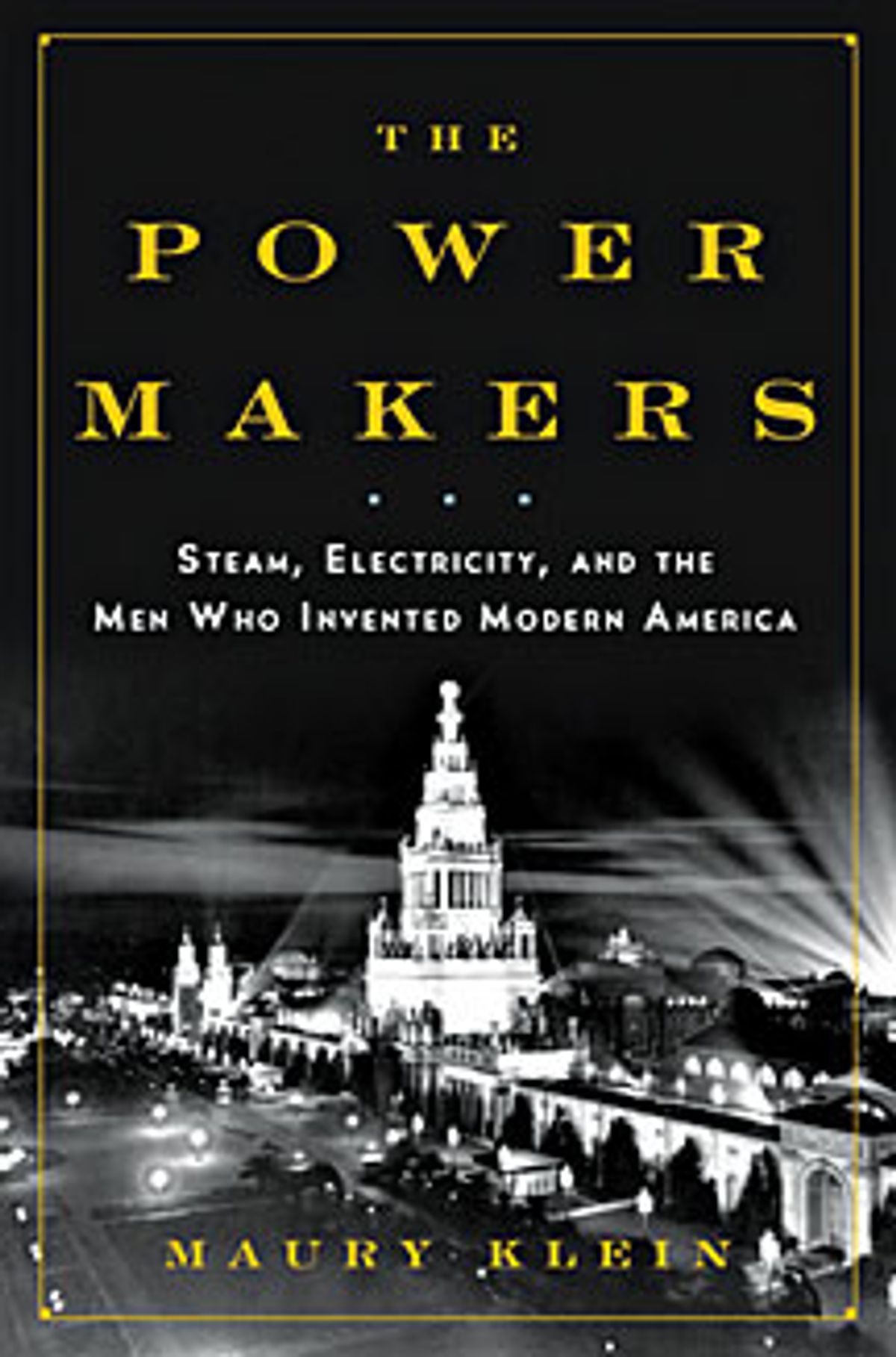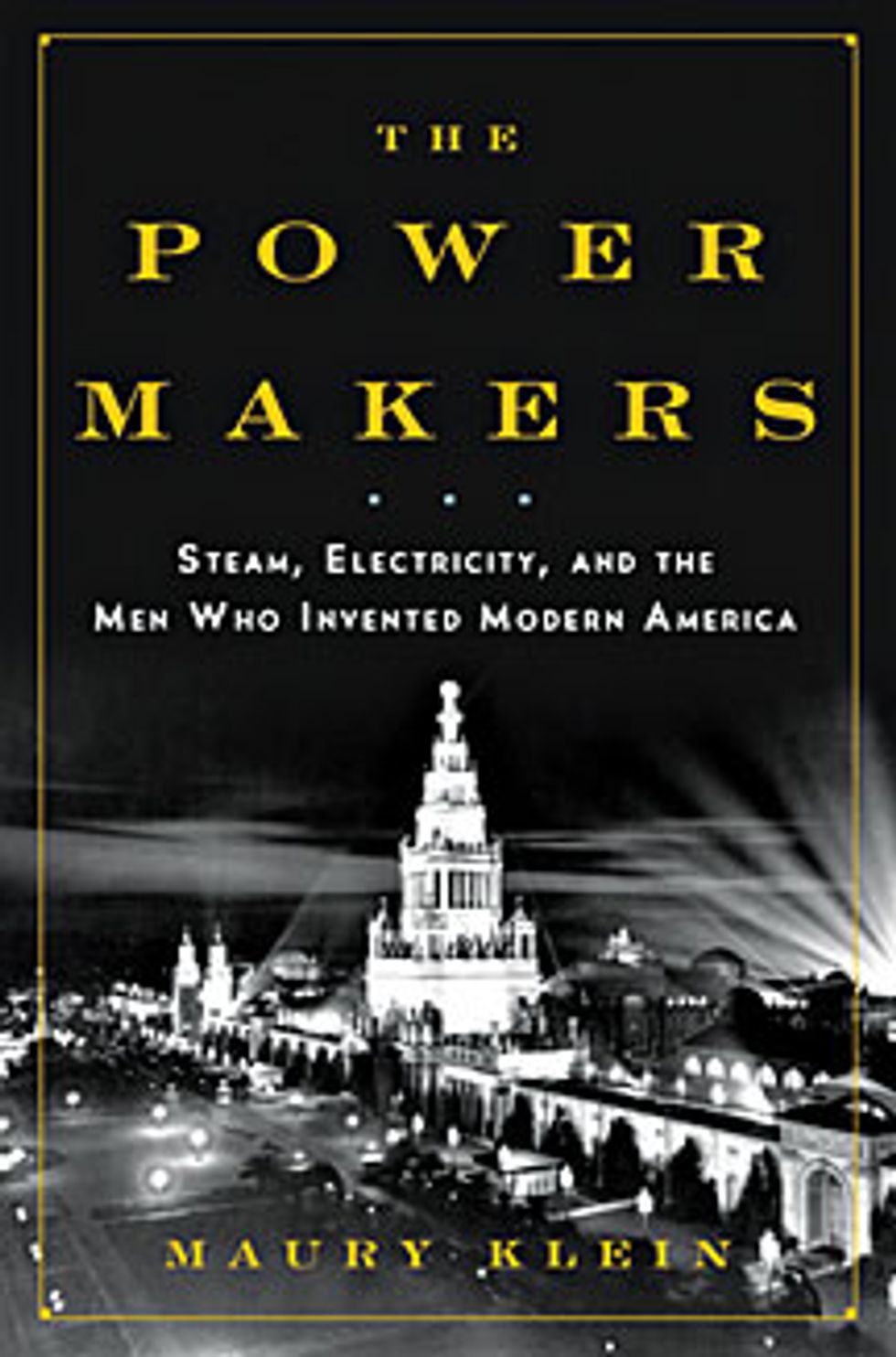The Power Makers: Steam, Electricity, and the Men Who Invented Modern America
By Maury Klein; Bloomsbury Press, 2008; 560 pp.; US $29.99; ISBN: 978-1-59691-412-4
The United States rose to global power on the strength of its technology, and the lifeblood of that technology has long been electricity. By providing long-distance communication and energy, electricity created the modern world, and it did so in a single lifetime. Yet properly understood, the age of electricity is merely the second phase in the age of steam, which began a century earlier.
“It is curious that no one has put together a history of both the steam and electric revolutions,” writes Maury Klein in his preface to The Power Makers: Steam, Electricity, and the Men Who Invented Modern America. Klein, a noted historian of technology, spins a narrative so lively that at times it reads like a novel. Power Makers is chiefly about the men of the golden age of invention. Their names are a roll call from IEEE’s hall of fame: Watt, Morse, Bell, Edison, Westinghouse, Tesla, and others. Equally important, though, are the industrialists—such as J.P. Morgan, Charles Coffin, and Samuel Insull—who turned groundbreaking discoveries into vast commercial enterprises.
The story begins in Scotland, where Watt perfected “the machine that changed the world.” Klein writes, ”America did not invent the steam engine, but once they grasped its possibilities they embraced it eagerly and put it to more uses than anyone else.”
Meanwhile, over the course of the 19th century, electricity went from quaint curiosity to indispensable commodity. Morse devised a code for sending messages over an electromagnetic circuit. Bell then gave the telegraph a voice. Edison perfected an incandescent bulb that brought electric light into the American home.
Critically, Edison realized that success depended on mass electrification, which he demonstrated in New York City. With help from the Serbian émigré Tesla, Westinghouse’s firm developed a rival system using alternating current, which soon became the dominant form of delivery
What moved the United States to industrial preeminence, however, were the businessmen who quickly provided the acumen and capital to turn private power facilities into public utilities and to extend local power-delivery networks into massive distribution grids. Morgan’s backing helped create the General Electric Co., which Coffin forged into a conglomerate to rival Westinghouse’s own. Insull, who had long been Edison’s chief lieutenant, left for the greener pastures of the Midwest, founding the Commonwealth Edison Co. in Chicago and expanding it into rural areas, creating a model for the electrification of all America.
To frame his epic story, Klein devises the character of Ned, a fictional witness to the progress brought about by the steam and electric revolutions in America during one man’s lifetime. It’s a pleasing contrivance that helps turn a long narrative into an engrossing one.

